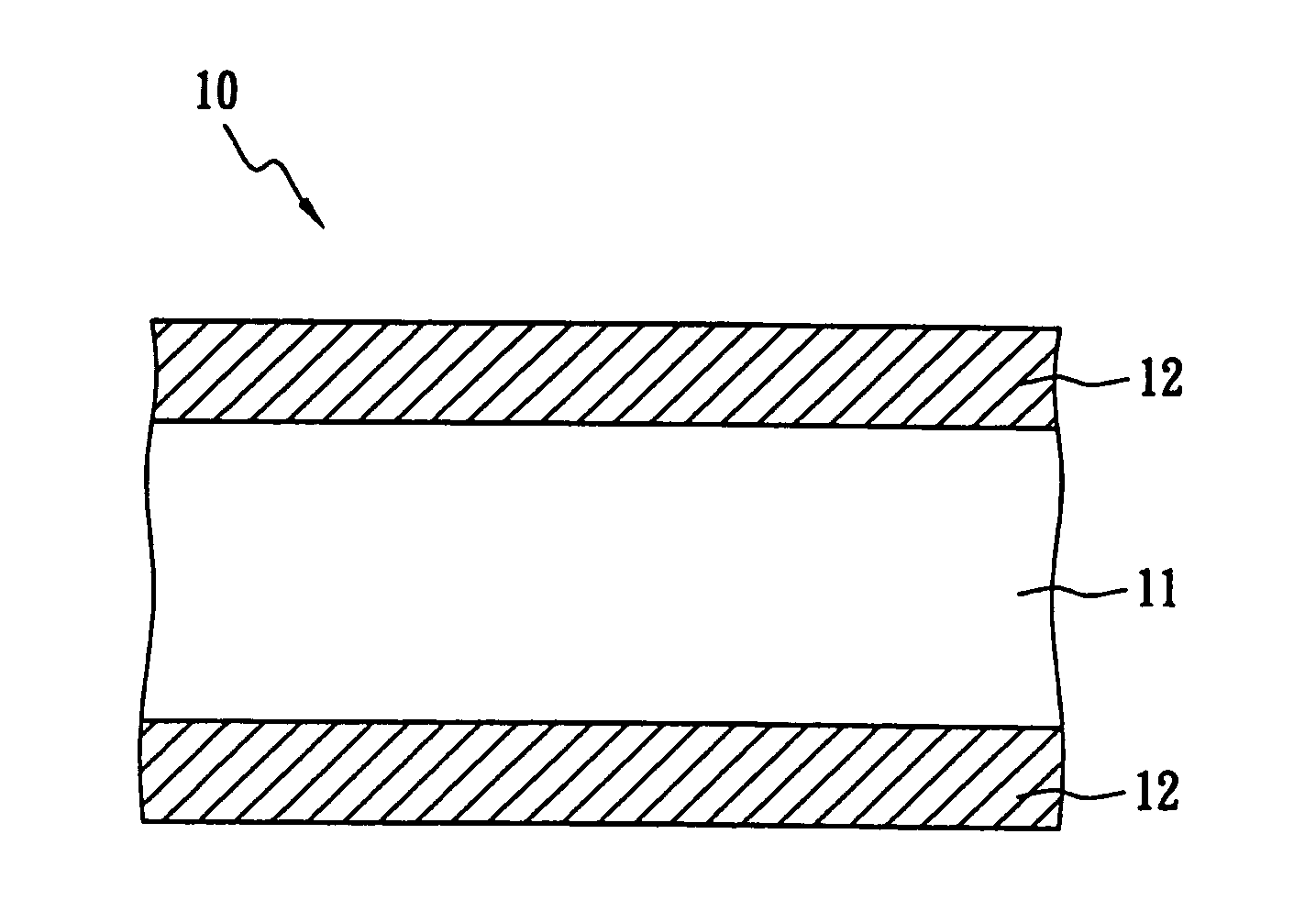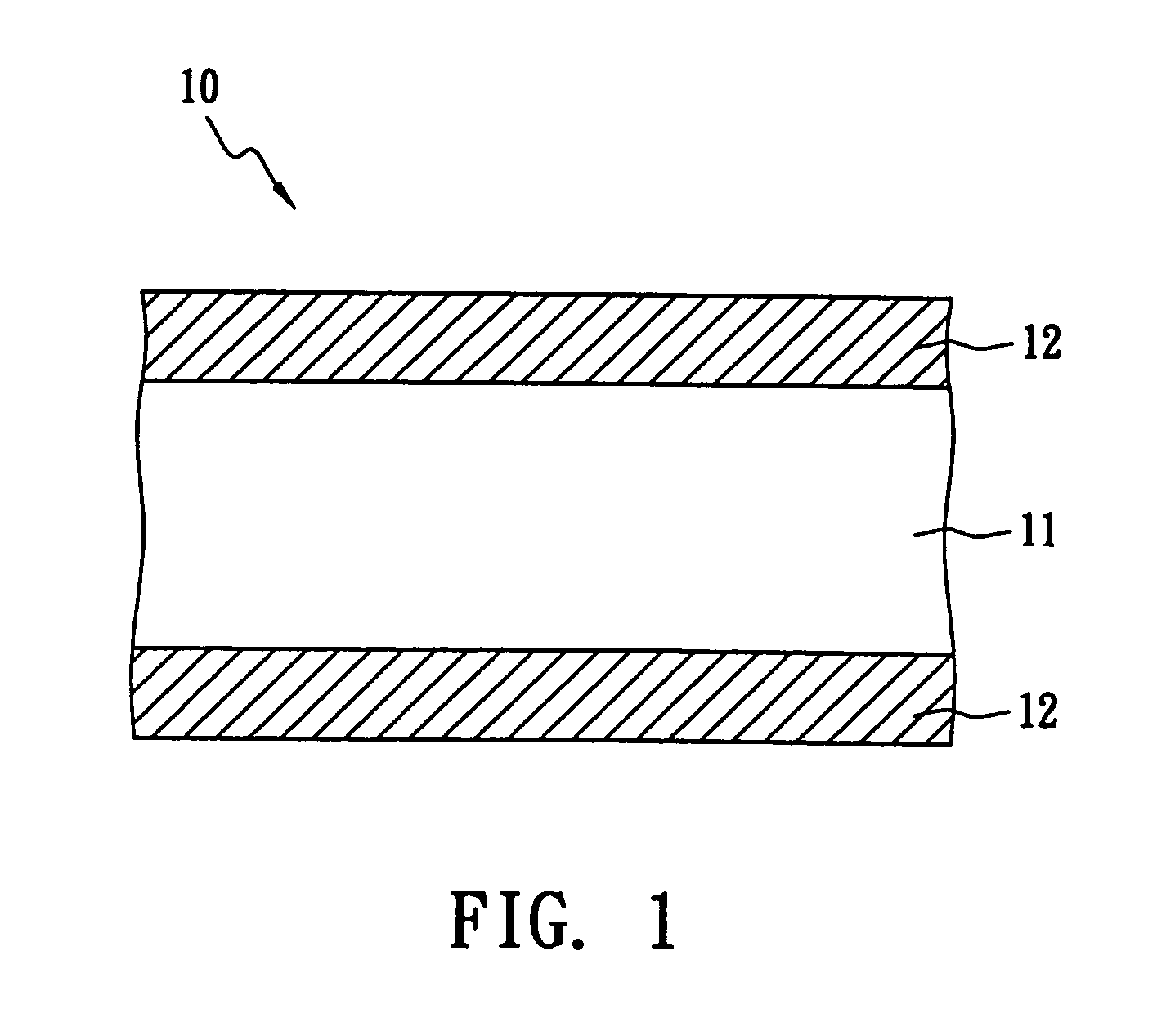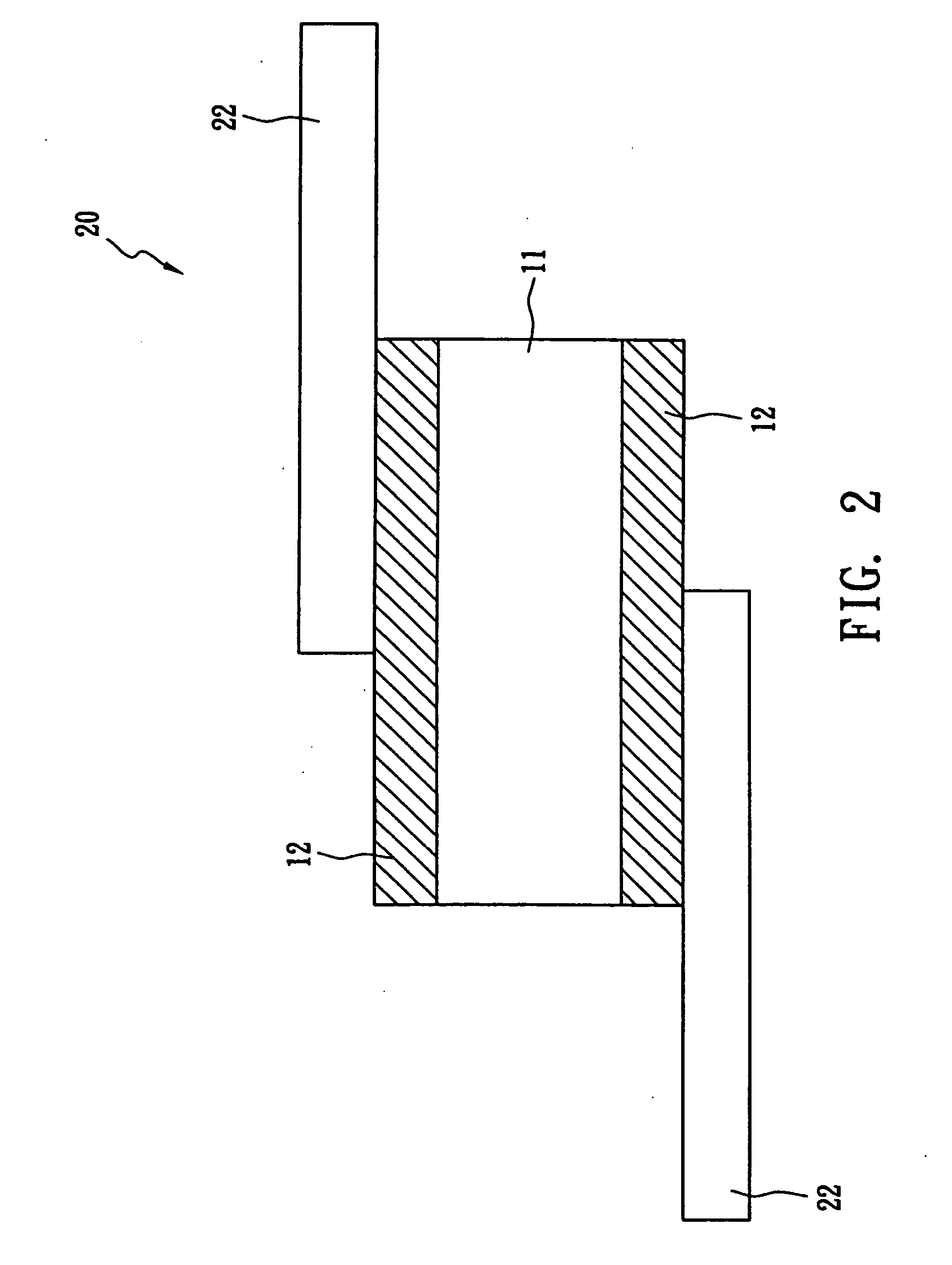Over-current protection device
- Summary
- Abstract
- Description
- Claims
- Application Information
AI Technical Summary
Benefits of technology
Problems solved by technology
Method used
Image
Examples
Embodiment Construction
[0018] The following will describe the composition and the manufacturing process of a preferred embodiment of the over-current protection device of the present invention with accompanying figures.
[0019] The composition of the PTC material layer used in the over-current protection device includes a first crystalline polymer (HDPE: density: 0.962 g / cm3; weight: 12.11 g), a second crystalline polymer (HDPE: density: 0.943 g / cm3; weight: 3.03 g), a non-conductive filler (magnesium hydroxide: weight: 4.2 g) and a non-oxide electrically conductive ceramic powder (titanium carbide: weight: 85.75 g). In this embodiment, the first and second crystalline are both high-density polyethylene and the titanium carbide exhibits particle size distribution between 0.1 μm and 10 μm.
[0020] The manufacturing process of the over-current protection device is described as follows. The raw material is fed into a blender (Hakke 600) at 160° C. for 2 minutes. The procedure of feeding the raw material is: ad...
PUM
 Login to View More
Login to View More Abstract
Description
Claims
Application Information
 Login to View More
Login to View More - R&D
- Intellectual Property
- Life Sciences
- Materials
- Tech Scout
- Unparalleled Data Quality
- Higher Quality Content
- 60% Fewer Hallucinations
Browse by: Latest US Patents, China's latest patents, Technical Efficacy Thesaurus, Application Domain, Technology Topic, Popular Technical Reports.
© 2025 PatSnap. All rights reserved.Legal|Privacy policy|Modern Slavery Act Transparency Statement|Sitemap|About US| Contact US: help@patsnap.com



